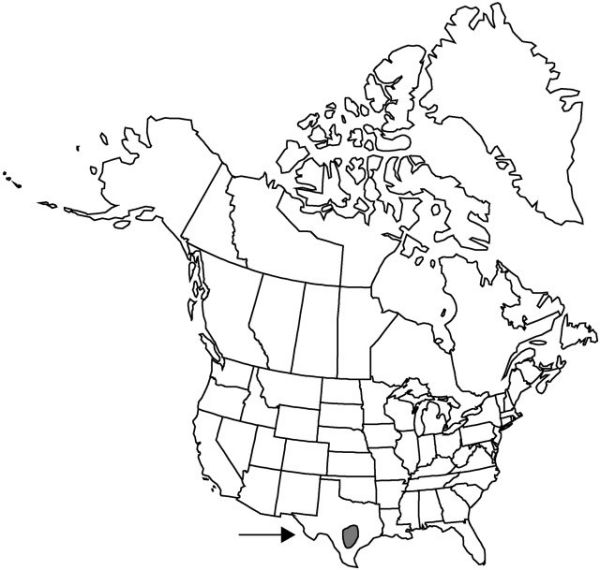Difference between revisions of "Yucca rupicola"
Linnaea 23: 143. 1850.
FNA>Volume Importer |
FNA>Volume Importer |
(No difference)
| |
Revision as of 21:45, 16 December 2019
Plants usually forming open colonies of rosettes, acaulescent, with branching subterranean caudices; rosettes 2–15 per colony, each rosette with fewer than 100 leaves. Leaf blade lanceolate, twisted, strongly concave, widest at middle, distinctly narrowing toward base, broadened at stem attachments, 35–60 × 1.7–4 cm, somewhat fleshy, flexible, margins denticulate or wavy, dark orange or reddish brown, apex pointed. Inflorescences paniculate, arising beyond rosettes, narrowly ovoid, 2.5–10 dm; branches 0.7–2 dm; bracts erect; peduncle scapelike, 0.3–1.5 m, 1.5–2 cm diam. Flowers pendent; perianth campanulate; tepals distinct, white or greenish white, ovate, 4–7 × 1.5–3 cm, apex sharply acuminate; filaments 1.8–3.2 cm; pistil 2.5–4.5 cm; style white or greenish, 12–20 mm; stigmas lobed. Fruits erect, capsular, dehiscent, ellipsoid to cylindric, 4–5.5 × 2–3 cm, dehiscence septicidal. Seeds dull black, thin, 6–8 mm diam.
Phenology: Flowering late spring.
Habitat: Rocky hillsides of limestone ledges, open plains, woodlands
Elevation: 400–900 m
Discussion
Yucca rupicola is endemic to southeastern Edwards Plateau. It is the only species in the flora with flaccid, twisted leaves.
Selected References
None.
